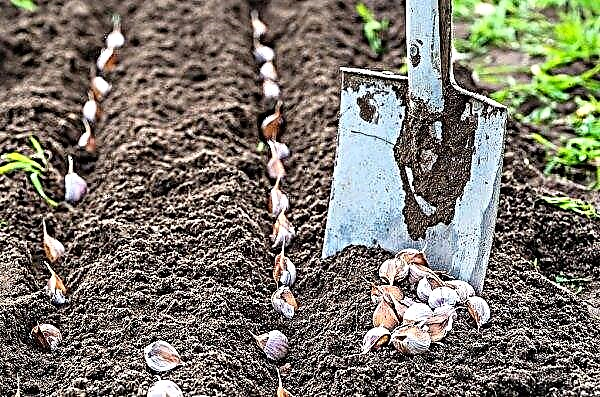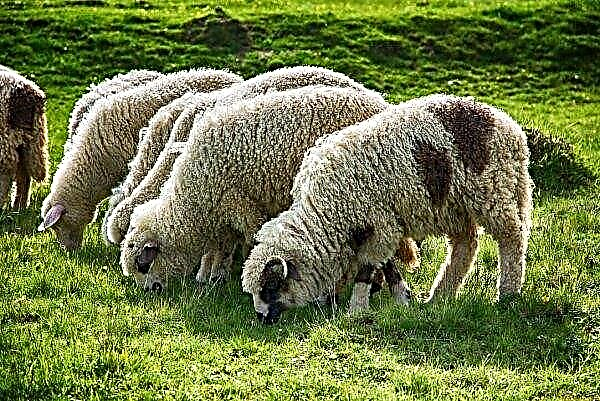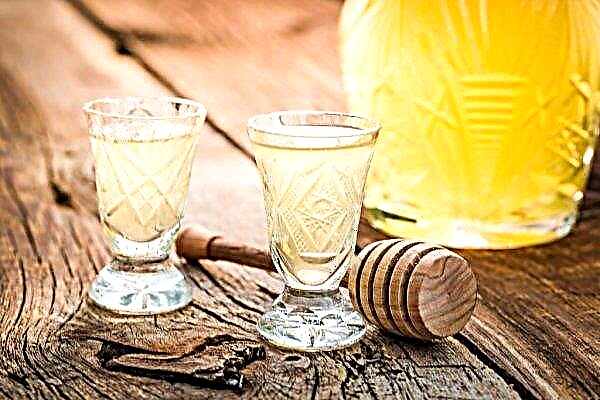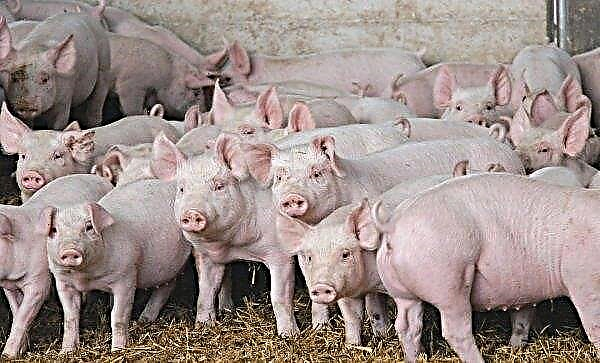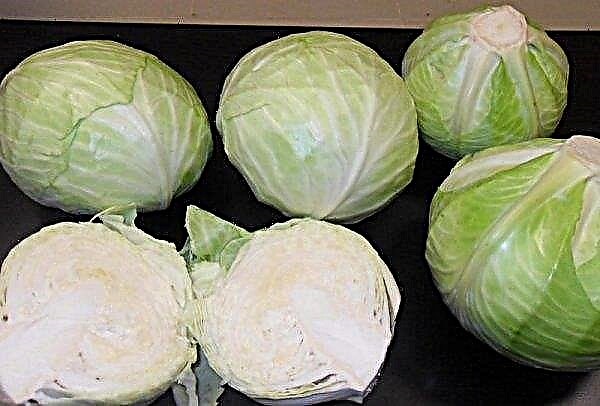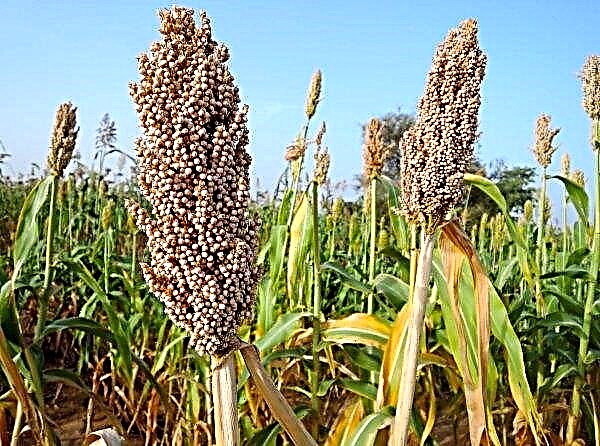Hydrangeas are an excellent solution for decorating personal plots, especially when you consider the varietal variety of these flowers. White, lilac, pink and richly red lush buds will certainly not leave indifferent any real grower. In such a palette of colors, two-color panicled specimens - the Pink Lady variety, which looks very attractive and unusual against the background of monophonic options, also take their place. What exactly is worth knowing about growing such flowering plants, how to properly plant and care for them in your area - read on.
Grade description
Pink Lady plants are spreading tall bushes reaching two meters in height. Their shoots are straight, mostly brown, with a slight reddish tint in autumn. White flowers are quite dense, interconnected into squashed, elongated-conical inflorescences, up to 30 cm long. During the growth process, a pink blush appears on their snow-white background of their petals, but they still smell deliciously (the smell is sickly sweet).
Hydrangea leaf plates of this variety are slightly elongated in length, ovoid in shape and rich green in color, with a rough outer surface. In length, they grow up to 10-15 cm and in combination with the same long and bright inflorescences make the bush very elegant. Flowering begins in the second half of July and lasts almost until the frosts themselves. Blooming buds are great for growing in the garden, and for cutting into bouquets.
Important! Under the weight of the inflorescences, the branches can sink to the ground, distorting their shape. For this reason, some of them are deleted.
Hydrangea planting
Planting hydrangea as a whole is not much different from performing planting measures when growing other varieties of flowering crops. True, some actions will have their own characteristics. This applies to both the preparatory stage and the direct planting of plants, which you should know about before buying a seedling.
Preparation for landing
The Pink Lady variety has increased cold resistance, therefore, based on the specific climatic region of cultivation, seedlings can be planted both in early spring (before buds open on the shoots), and in early or mid-autumn until the end of October. In the latter case, the planted young plants should be sheltered during the winter cold, especially in Central or Northern Russia.
Video: Planting panicle hydrangea
The second important step in preparing the described hydrangea for planting will be the selection of a specific place for planting and tillage. It is best if it is a site well lit by the sun, but hidden from the winds and drafts. Usually this place is on the south side, but for the south of the country with the scorching sun in the summer months, it is allowed to plant a seedling at partial shade so that the delicate petals of its flowers do not lose their decorativeness.
As for the neighbors, then Pink Lady should not be planted next to large trees, since the latter will draw a lot of valuable nutrients from the soil. It is also worth avoiding the neighborhood with tulips, daffodils, hyacinths and other bulbs, which require annual digging.

The composition of the soil can be any, though hydrangeas feel best on nutritious, fertile loam, with a neutral acidity level and without any alkaline inclusions (lime is especially destructive for culture). In a radius of 5-6 meters, you should not add chalk and ash to the ground, since the rhizome of a flowering shrub grows far from the center of the plant.
The selection and pre-planting treatment of Pink Lady hydrangea seedlings is another important aspect of the preparatory phase. The most suitable option would be three- or five-year-old plants with a healthy, flexible and elastic rhizome, without signs of decay and damaged by pests.. On the stem and shoots of the culture there should be no cracks, spots or other visible damage, and the leaf plates, which are preserved in many seedlings, must be whole and evenly colored.

About 2 days before planting, hydrangea roots need to be soaked in a root stimulant (for example, the preparation "Epin" or "Kornevin"), having previously dissolved in it a small amount of potassium permanganate. It will help eliminate possible bacteria and other harmful microorganisms preserved on young Pink Lady hydrangea plants.. 2 hours before planting bushes in the area, the seedlings rhizome is slightly cut and treated with clay mash. After it dries, you can proceed to planting.
Did you know? It is very difficult to completely change the color of the flowers of a particular variety of hydrangeas, but you can change their color, for which you only need to adjust the acidity and alkalinity of the substrate at the place of cultivation. For example, on acidic substrates with a pH of 5 or lower, most flowers will have pink buds, but when this indicator is increased to 5-6.5, a lilac or blue tint will most likely appear.
The procedure for landing
The landing algorithm of the described panicled hydrangea combines several sequential actions:
- 14 days before planting, in a pre-selected area, arrange a planting pit with a minimum size of 40 × 30 cm (depth / diameter) or based on the size of the rhizome of the purchased seedling.
- Mix peat and earth in equal proportions, add a little sand to them, as well as 50 g of ammonium nitrate and superphosphate fertilizer. Pour the soil mixture into the pit and leave for two weeks until planting.
- Pour 2 buckets of water into the hole a day before the hydrangea is planted, so that it can absorb well into the ground.
- On the day of planting, lower the young plant into the pit (in the center), spread its roots evenly over the soil surface and cover it with the remaining soil, but only so that the root neck remains above the ground.
- Pour seedlings abundantly with water and, if necessary, mulch with peat or wood sawdust, spreading the selected material on the surface with a five-centimeter layer.
 When planting between neighboring plants, they maintain a distance of at least three meters, which, given the ability of Pink Lady's hydrangeas to grow, will be a good solution for the normal development of a flowering shrub
When planting between neighboring plants, they maintain a distance of at least three meters, which, given the ability of Pink Lady's hydrangeas to grow, will be a good solution for the normal development of a flowering shrub
Hydrangea Care
Proper care for the described Pink Link hydrangea involves several basic tasks: regular watering, periodic top dressing and pruning of bushes, not to mention the importance of loosening the soil. Each of these actions will have its own characteristics.
Watering
Like many other varietal hydrangeas, Pink Lady is characterized by high hydrophilicity: after all, the development of the shrub itself and the abundance of its bloom to a large extent depend on a sufficient amount of moisture in the substrate. In a moderately hot summer, the flowers are moistened once a week, spending at least a bucket of protected water on each bush. With prolonged drought, the irrigation regularity is increased to two or even three times every 7 days, so that the earth in the near-stem circle of hydrangea always remains slightly moist.
Important! The best time to hydrange hydrangeas is in the early morning or late evening, when moisture will not quickly evaporate in direct sunlight.
To protect the roots of shrubs from leaching the soil, they are mulched with peat or other suitable materials., and when watering, try not to get on the leaves and inflorescences of hydrangea to avoid the appearance of dark spots.

Top dressing
The lush flowering of Pink Lady is for the most part based on regular and complete nutrition of the plant, therefore fertilizing is performed up to 4 times a year.
Did you know? The celebration of “Hydrangea Day”, ironically, does not take place during the flowering season of the culture, but in the winter, on January 5th. You can celebrate this date by buying a fresh bouquet of beautiful inflorescences in a flower shop.
Both organic and ready-made mineral nutrient mixtures are considered an acceptable option, but for their rational use it is worth adhering to a certain application scheme:
- In early spring, before the buds open and sap flow is active in the shoots, bird droppings or mullein, which, after dissolving in water (at a ratio of 1:15), are watered, are good fertilizer. One plant should have 2-3 liters of the finished solution, but on depleted soils this amount can be increased to 4-5 liters.
- The second feeding is carried out in the summer during the appearance of the first buds on the shoots. In this case, a mixture of 35 g of ammonium nitrate, 20 g of superphosphate and 10 l of clean water will be useful for the bushes, which will be enough to fertilize 1 m² of plantings.
- In the middle of the summer season, hydrangeas are fertilized for the third time using granules of any prepared mineral fertilizer for flowering crops. 30 l of the prepared solution is usually spent on one plant.
- For the fourth and last time a year, hydrangeas are fed in the early fall, pouring under them a mixture of 50 g of potassium salt and the same amount of superphosphate diluted in a bucket of water. Industrial preparations and organic mixtures, including nitrogen, should be excluded at this time.
- If your hydrangea without fertilizers is characterized by rapid growth and regular abundant flowering, summer top dressing can be missed by fertilizing the bushes in early spring and autumn, using organic and mineral nutrient mixtures.

Pruning
Pruning hydrangea bushes is necessary for the regular formation of large and lush inflorescences on their shoots, and here both shaping and sanitary pruning are important. In the spring, before hydrangea awakens and its buds swell, branches shorten up to 6–8 buds, while simultaneously removing all diseased, damaged by frosts or shrunken specimens. As a result of the actions taken, only 5-10 powerful shoots can remain on one plant.
For plants after 5 or 6 years of cultivation in the area, anti-aging pruning will be relevantwhen all hydrangea branches are removed under the root, and only 10-12 cm are left above the soil surface. Already next year new strong shoots will appear from these segments.
In the summer, Pink Ladies do not trim, and only faded buds are removed, which will stimulate the formation of new flowers.

Shelter for the winter
Since the Pink Lady variety is characterized by increased frost resistance and may calmly tolerate winter temperature drops down to -29 ° C, then in the middle lane and in the south of Russia, plants do not need shelter for the cold season. In particularly severe winters, without snow cover, the roots of the bushes are mulched with a mixture of dry leaves and humus, covering the soil surface with a layer of 20-30 cm.Young young flowers transplanted this year can be insulated with burlap or special agrofibre, additionally raking snowdrift on them.
Protection against diseases and pests
Pink Lady refers to hydrangea varieties possessing medium resistance to typical diseases and pestsTherefore, the likelihood of problems when growing it cannot be ruled out.
More often than other ailments, the bush suffers from powdery mildew - fungal disease, manifested in the appearance of a white coating on the leaves and shoots of the bush. The fungicidal preparations “Topaz”, “Fundazol”, “Quadris” will be effective in combating it, which are dissolved in water before use according to the instructions and then sprayed with hydrangea plantings.

No less dangerous ailment of these colors is considered and tracheomycotic wiltin which the fungus first affects the root system of the culture, and then slowly spreads through the vascular system of the flower. Over time, hydrangea slows its growth and begins to quickly wither away, so a productive treatment is possible only at the initial stages of the development of a fungal disease.
The most effective drugs in this case are Topsin-M, Vitaros and Fundazol, although in the event of a complete damage to the bush, the only right solution is to dig and burn it.

Of the pests, the aphids and bedbugs will be the most dangerous for panicled Pink Ladysucking juices from shoots and leaves of culture. Usually, when you inspect the plant on the inside of the leaf, you can see whole colonies of pests. To get rid of them, you will have to remove heavily damaged parts by spraying the remaining branches with a solution of the insecticides “Aktofit”, “Fitoverm” or “Trichopol” (applied to the leaves and shoots).
Important! When using any insecticidal or fungicidal preparation, to increase the effectiveness of its use, it is better to perform hydrangea treatment twice: immediately after detecting a problem and 3-4 weeks after the first spraying.
In rainy weather, often appear on a plot with flowers snails, eating leaf plates and harming the overall decorative shrubs. They are usually collected manually. To limit the possibility of movement of pests under bushes with flowers, you can sprinkle the surface of the soil with ash or sand.

For preventive purposes, hydrangeas can be treated with garlic infusion or onion peel decoction., which will be completely safe for people and the plants themselves at any stage of their vegetation.
Pink Lady in Landscaping
Large shrubs of hydrangeas Pink Lady can become a real highlight of a suburban area or a good addition to urban park areas, you just have to adhere to certain recommendations of landscape design. It is possible to plant the described hydrangea both in group and in single plantings, combining with other flowering crops of different sizes and colors. The main requirement in this case is the identical needs of all used crops for nutrients and soil moisture level.
It will be interesting to look at hydrangea against the background of conifers, harmoniously combining with evergreen trees and shrubby forms of pines, cypresses, thuja. In which part of the plot to plant flowers, each grower can decide for himself, the main thing is that in the chosen place they will be provided with all the conditions for productive growth and development.

In general, the Pink Lady variety is equally well suited for planting both in small private areas and in rather vast territories of urban house estates, and the low demand of plants for growing conditions and the relatively unpretentious flowering crops in further care only add advantages to this particular hydrangea variety. Having made every effort to plant and grow Pink Lady hydrangea, your site will soon stand out from the neighbors, and lush and voluminous buds of shrubs will not leave indifferent any guest.

